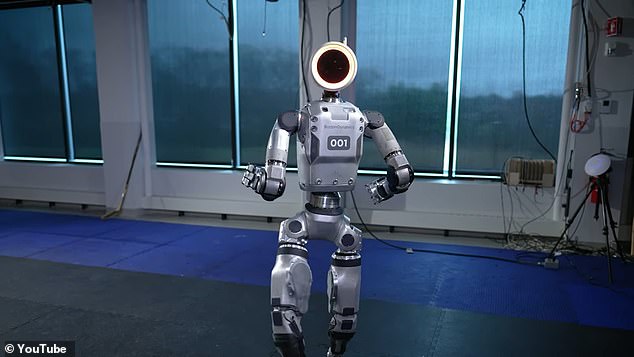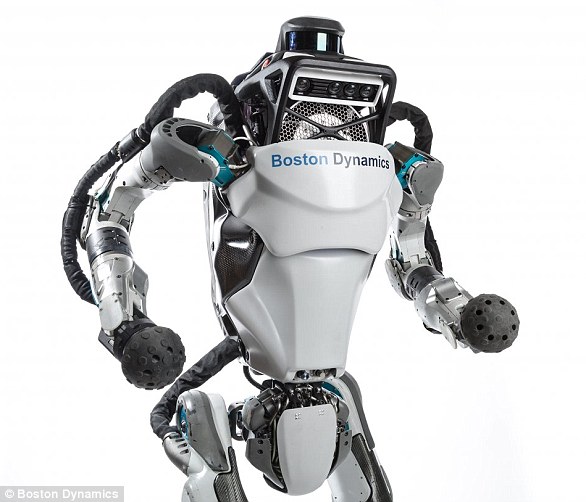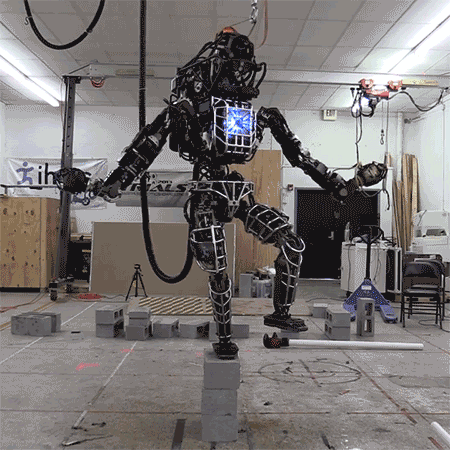Boston Dynamics has unveiled a new version of its humanoid robot Atlas, showing off its creepy movements that make it look like something out of a sci-fi horror movie.
The Massachusetts-based robotics company shared a video of the latest humanoid, showing it putting its leg behind its head to stand up, in a way that the public said “looked somewhat out of the ordinary.” The Exorcist.’
This new version features joints that allow the machine to bend and move in ways the human body cannot, unlike the original rigid Atlas, famous for dancing and parkour.
The company also plans to sell the latest humanoid robot, but the price has not yet been revealed and it is scheduled to begin its first work in Hyundai factories next year.
Boston Dynamics announced the new version of its Atlas humanoid robot, with a ring of light as a face.
The new robot seemed to move completely differently compared to the previous one, as shown in the video advertisement.
In the clip, the new Atlas can be seen rising from the ground with eerily smooth precision before rotating 180 degrees at the waist and neck.
The old Atlas had hydraulic actuators in its joints, which moved by pumping pressurized fluid in and out of them.
This type of system is powerful and allows the robot to run and jump with speed and intensity.
But it’s not very smooth and the robot could only move each joint about 20 degrees.
Human elbows, by comparison, can bend between 130 and 153 degrees.
For the new Atlas, Boston Dynamics ditched the hydraulic system in favor of an all-electric design.
This offers multiple advantages, the company claims: the electric motors in the joints will be stronger than hydraulic actuators and will offer a wider range of motion.
The new Atlas can rotate 360 degrees in all its joints.
The new design will also give the robot more ways to grab and carry objects, Boston Dynamics said.
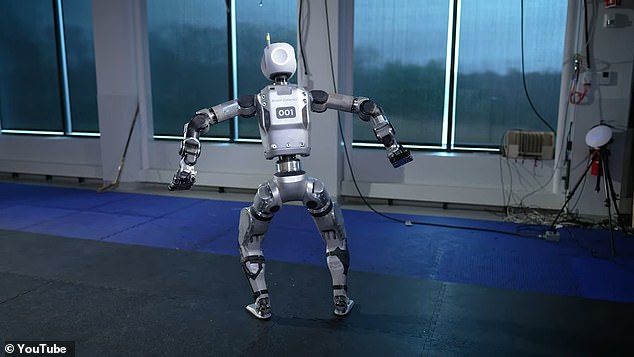
The new Atlas has power joints that can rotate 360 degrees, so although it appears humanoid, it can move much more flexibly than the human body.
This is important because Boston Dynamics intends for the new Atlas to be used in manufacturing, transporting parts to and from the assembly line.
Therefore, it is important for Atlas to “meet a diverse set of handling needs expected in customer environments,” according to the company’s report. advertisement.
In other words, you will be able to carry different things.
However, this robot is not a forklift with legs. In fact, it is not even designed to be able to transport boxes.
In many cases, the parts entrusted to Atlas will be bulky or have unusual shapes, so it is important that the robot arms can adapt to many different shapes and sizes.
And while it is human-shaped, the robot is designed to move “as efficiently as possible to complete a task, rather than being limited by a human range of motion.”
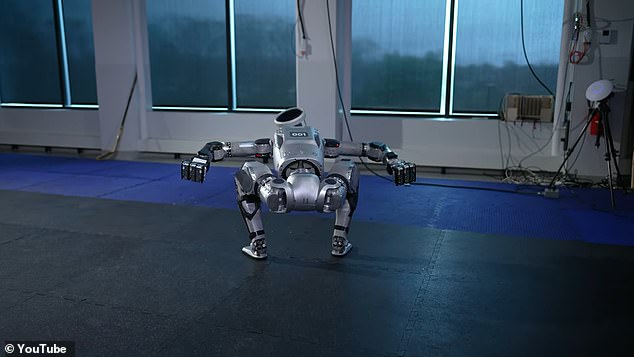
In the announcement video, Atlas can be seen slowly rising from the ground, free from the usual limits of human joints.
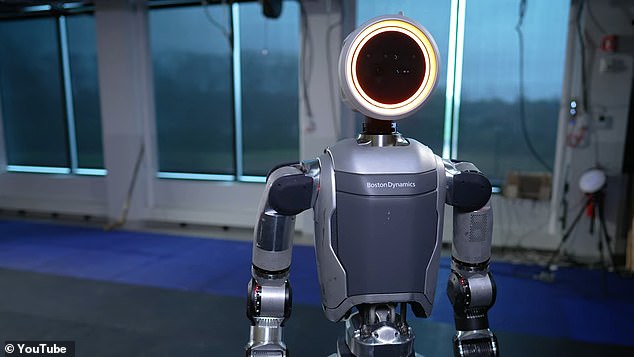
The new Atlas has a round, blank face with a light. This is a major change from the old Atlas, which did not have a head that could move.
In the 11 years since Boston Dynamics first announced Atlas, the move to power joints is a major overhaul.
And rightly so, according to Robert Playter, CEO of Boston Dynamics.
“We wanted to have a machine that, when we announced it, would tell the world that Boston Dynamics had just set the bar again for humanoids,” he said. said he Boston Globe.
Since the company started sharing Atlas videos, it seems like everyone has gotten into the humanoid robot space.
Tesla has been working on its Optimus robot and shared a video of it slowly but gently walking around the factory in February.
In October, Amazon announced plans to begin using humanoid robots in its warehouses.
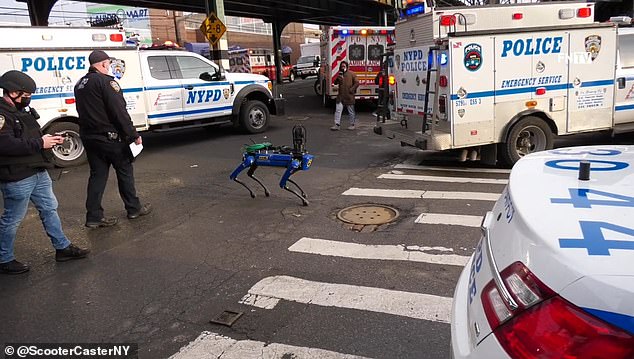
Residents of the Bronx, New York, stopped in their tracks as the four-legged robotic dog trotted down East 227th Street in February 2021.
But Playter said Atlas will be at home in factories, not warehouses.
“It’s really about the logistics within factories to move the part to the assembly line,” he said, noting that the average factory robot has a hard time handling odd shapes. ‘I really don’t think they’re boxes. If you’re going to pick up boxes or containers, there’s another robot you should build.’
If all goes well with Hyundai’s factory test next year, Boston Dynamics will expand to a small number of other manufacturers.
Atlas is set to be the company’s third commercial robot, after the dog Spot and the box-unloading Stretch.
Spot launched in 2019 and in 2021 he gained and lost a spot in the NYPD.
The NYPD had reportedly planned to use the dog on dangerous rescue missions, but the city canceled the contract after protests over concerns that the expensive robots were part of excessive police militarization.
In 2021, the company launched Stretch, intended for loading and unloading boxes onto trucks and warehouse floors.

